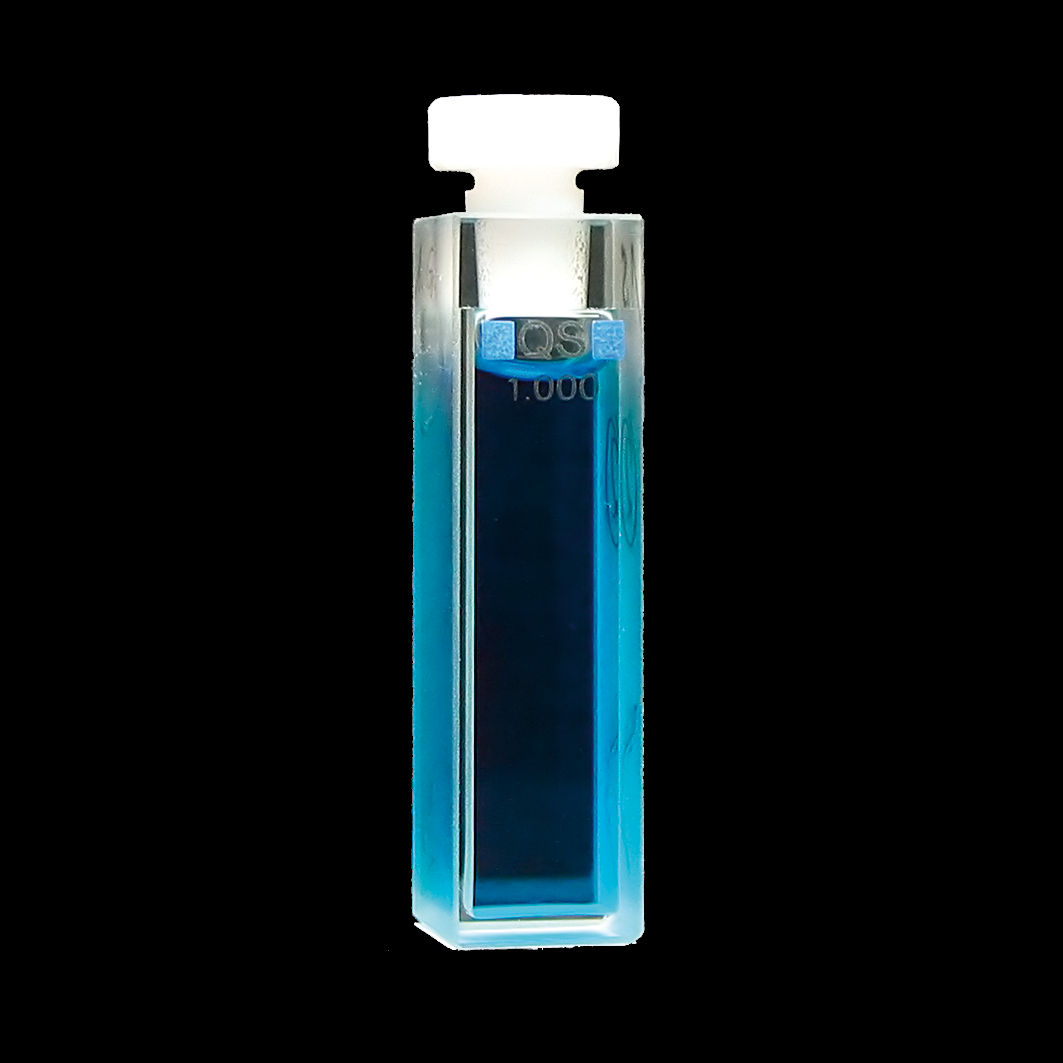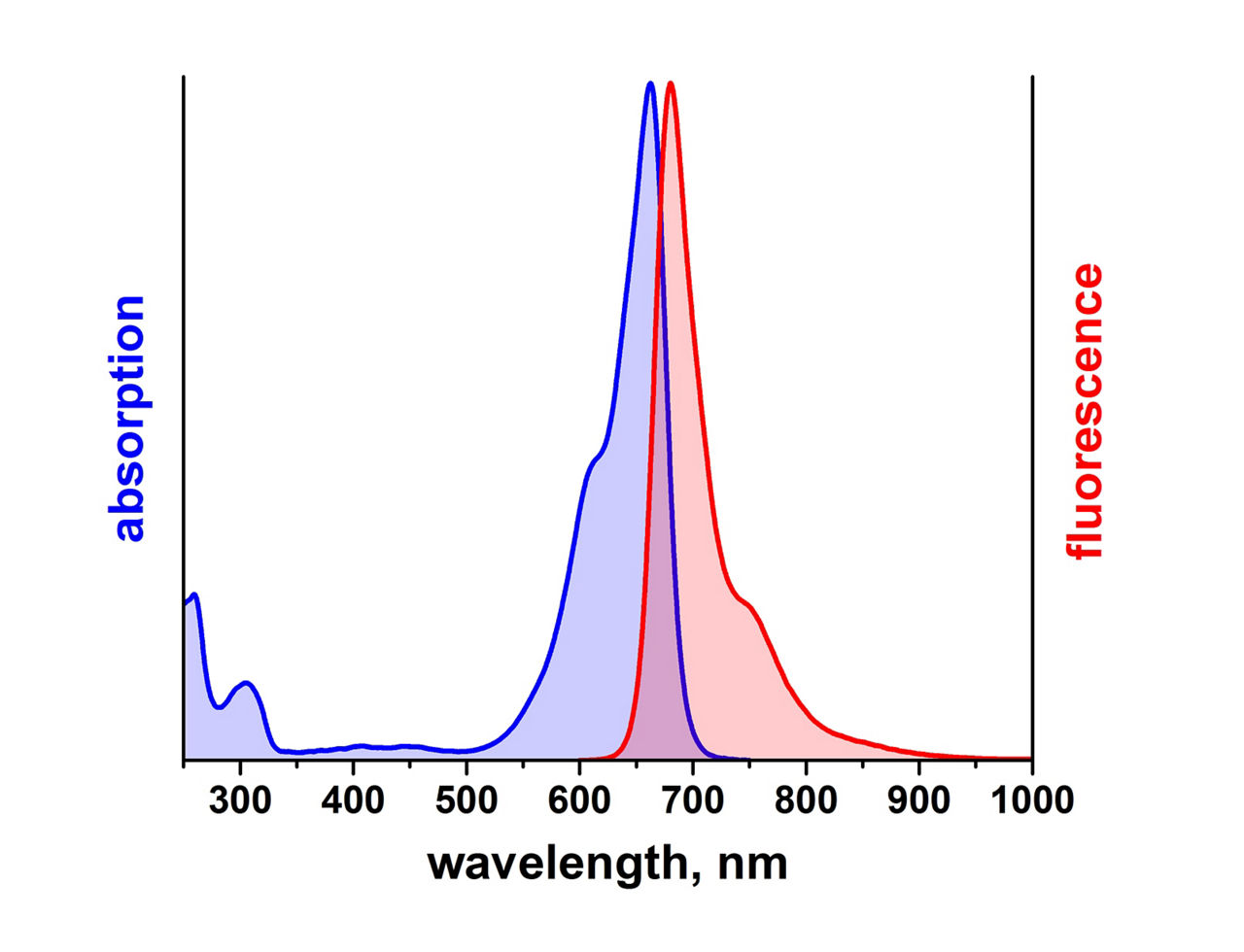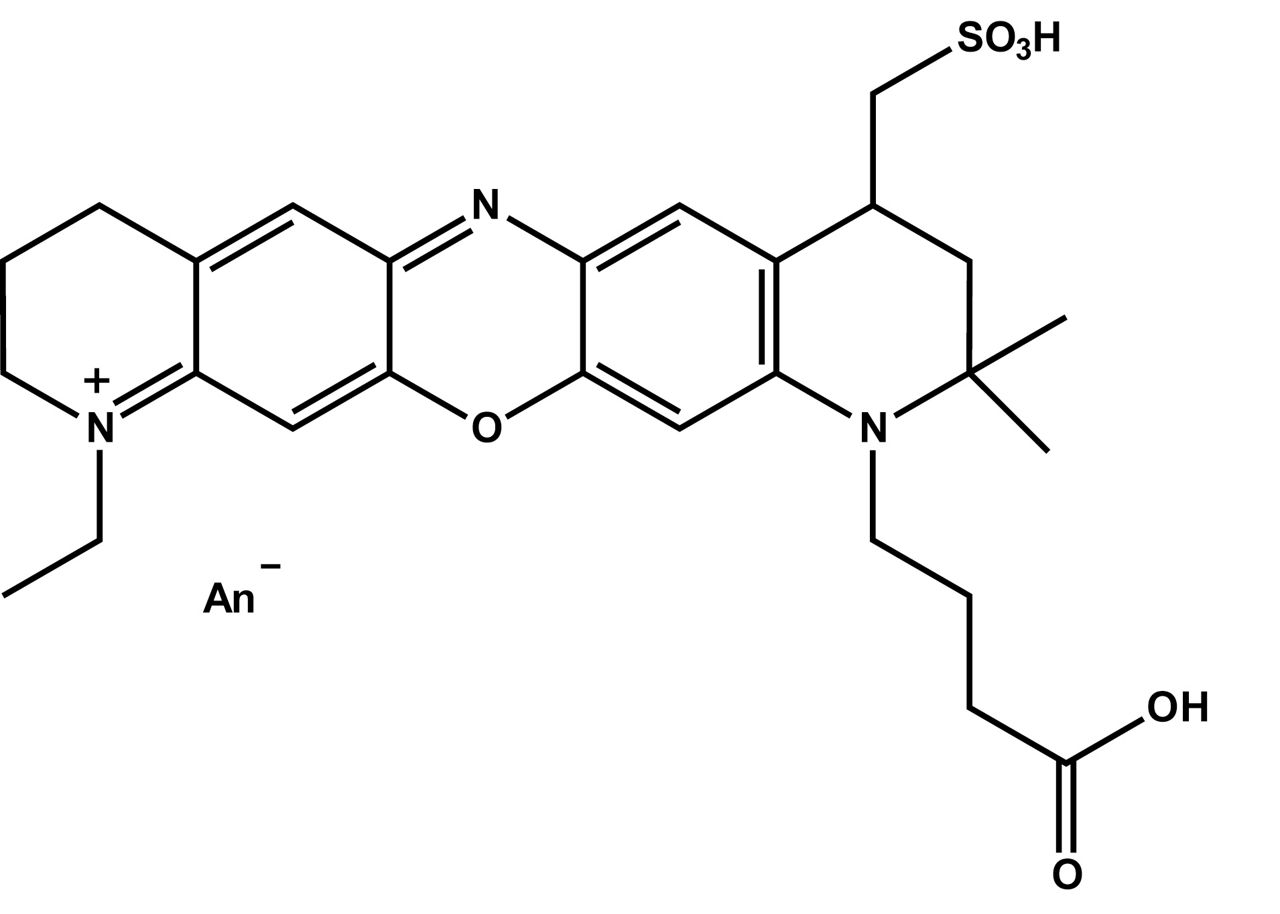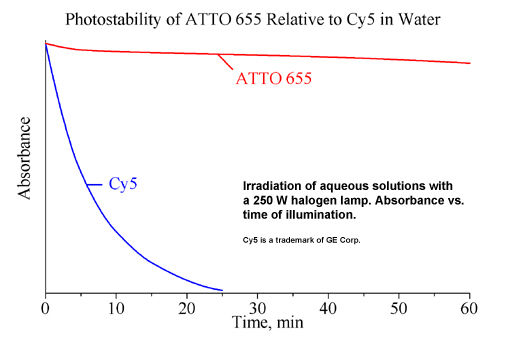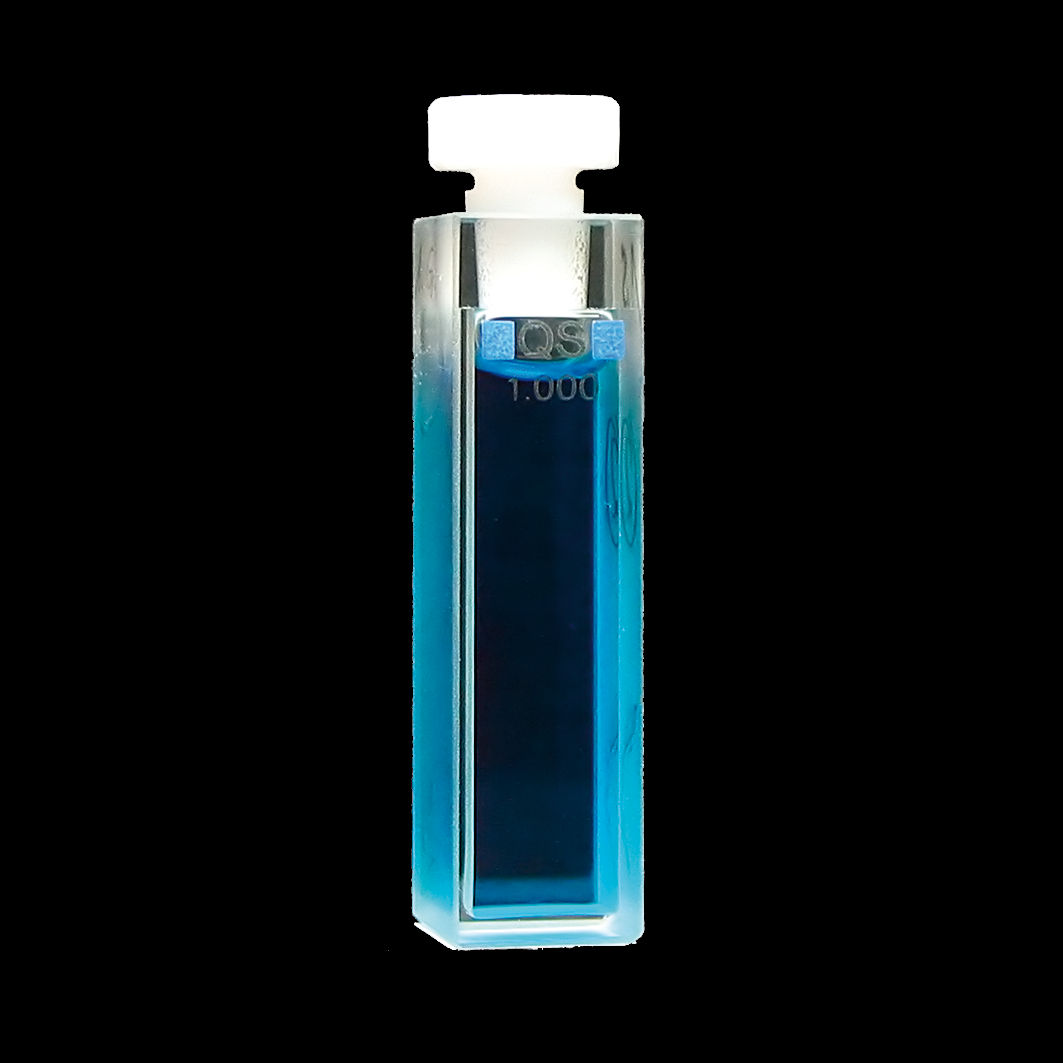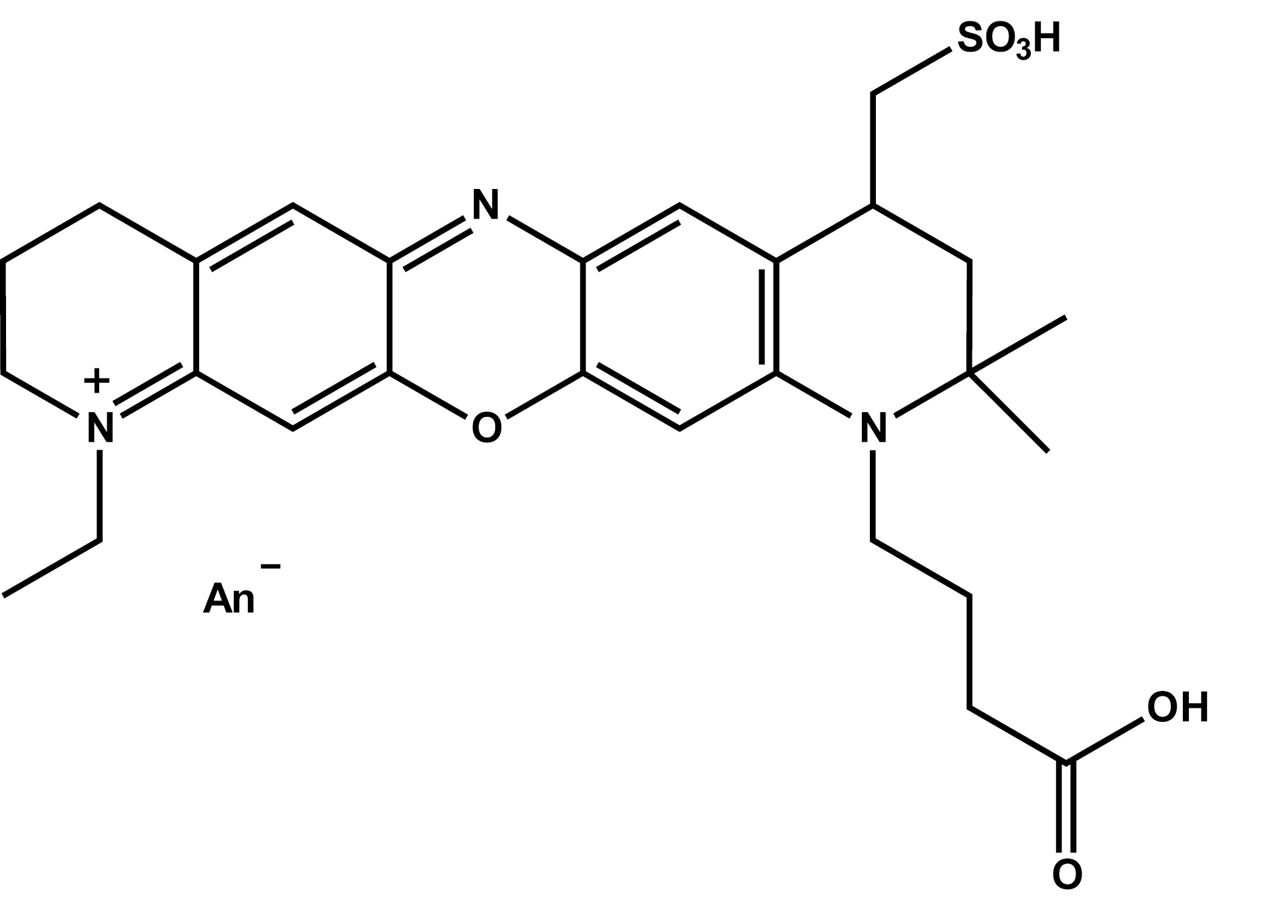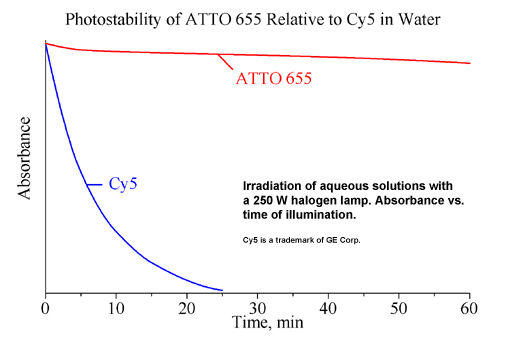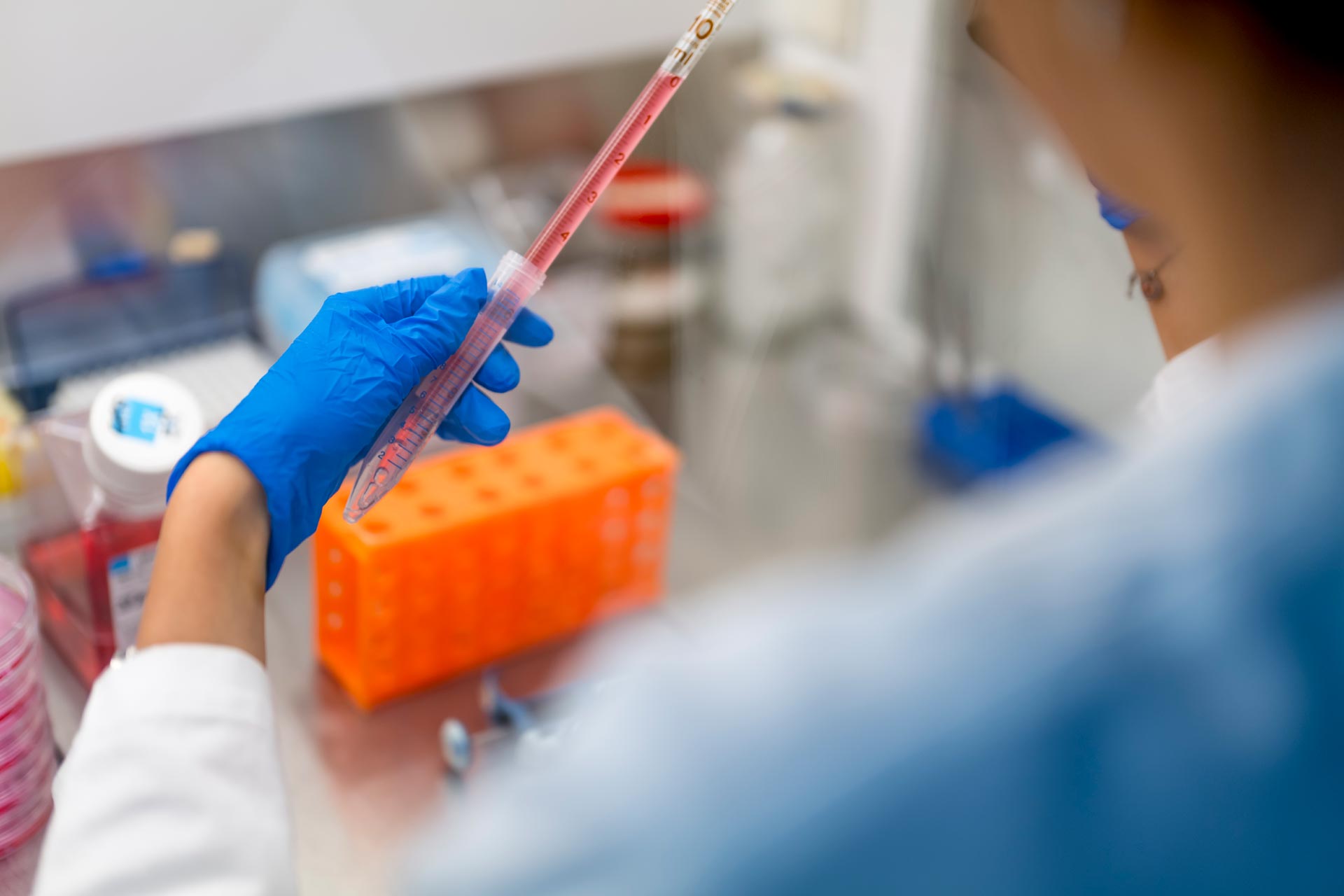ATTO 655 biotin, 5mg
Product No. AD-655-75
ATTO 655 belongs together with ATTO 680 and ATTO 700 to a new generation of fluorescent labels.
ATTO-TEC is a wholly owned subsidiary of Leica Microsystems
Optical properties
- λ abs = 663 nm
- ε max = 1.25×105 M -1 cm -1
- λ fl = 680 nm
- n fl = 30 %
- τ fl = 1.8 ns
- CF 260 = ε 260 /ε max = 0.24
- CF 280 = ε 280 / ε max = 0.08
ATTO 655 belongs together with ATTO 680 and ATTO 700 to a new generation of fluorescent labels.
Characteristic features of the label are strong absorption, high fluorescence quantum yield, high thermal and photo-stability, exceptionally high stability towards atmospheric ozone, and very good water solubility. Thus ATTO 655 is highly suitable for single-molecule detection applications and high-resolution microscopy such as PALM, dSTORM, STED etc. Additionally the dye highly qualifies to be applied in flow cytometry (FACS), fluorescence in-situ hybridization (FISH and many more.
ATTO 655 is a zwitterionic dye. After coupling to a substrate the dye moiety is electrically neutral. ATTO 655 is a strong electron acceptor. Its fluorescence is efficiently quenched by electron donors like guanine, tryptophan, etc. The fluorescence is excited most efficiently in the range 640 - 660 nm. A suitable excitation source is the 647 nm line of the Krypton-Ion laser or a diode-laser emitting at 650 nm.
ATTO 655
ATTO 655 belongs together with ATTO 680 and ATTO 700 to a new generation of fluorescent labels.
Characteristic features of the label are strong absorption, high fluorescence quantum yield, high thermal and photo-stability, exceptionally high stability towards atmospheric ozone, and very good water solubility. Thus ATTO 655 is highly suitable for single-molecule detection applications and high-resolution microscopy such as PALM, dSTORM, STED etc. Additionally the dye highly qualifies to be applied in flow cytometry (FACS), fluorescence in-situ hybridization (FISH and many more.
ATTO 655 is a zwitterionic dye. After coupling to a substrate the dye moiety is electrically neutral. ATTO 655 is a strong electron acceptor. Its fluorescence is efficiently quenched by electron donors like guanine, tryptophan, etc. The fluorescence is excited most efficiently in the range 640 - 660 nm. A suitable excitation source is the 647 nm line of the Krypton-Ion laser or a diode-laser emitting at 650 nm.
